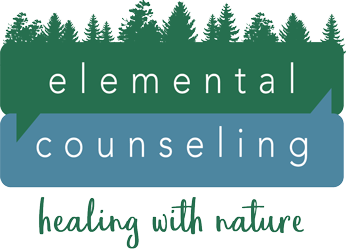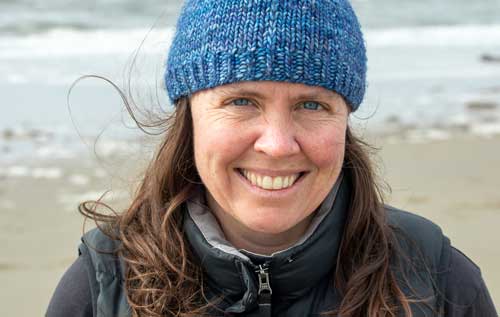Songs about climate change matter
Last month, I was making my way to the bathroom line at an outdoor concert–Portland, ME based band GoldenOak. The concert was the live debut of their newest album, Room to Grow, written entirely about climate change. I’d started walking during an older song that I enjoyed but didn’t feel particularly connected to. At the next song transition, though, I stopped, quite literally in my tracks. Something about the simple guitar chords and the opening phrase ‘Listen here, little one…’ caught me, I paused, turned to the band, and stood amidst strangers in between my seat and the bathroom. You could feel a shift in the audience, attention directed more strongly towards a lovely melody with a powerful message. The song built towards a haunting stanza…
“Still a lot of good people living under the water, and the life on the line….and the truth that will come in time…that the first to feel this change….aren’t the ones to blame.”
Ouch.
Hearing this piece for the first time, tears glistened in my eyes and my heart ached. I could see and feel similar reactions in the faces and bodies of the strangers around me. Although I knew nobody in my immediate vicinity, I felt very connected with all in that moment, united by a beautiful song about a devastating topic.
During the performance, Zak Kendall (songwriter and performer) shared that he has had doubts about his chosen profession. Given all the urgency and work to do around climate change, should he be doing something other than writing songs? Thankfully, instead of walking away from music, he chose to write songs about the issue most pressing and relevant for him. I’m so glad he did.
Because here’s the thing. We need songs about climate change. I know this because of neuroscience (which I’ll get to shortly) but I also know it because of what I experienced when I thought I was just walking to the bathroom but ended up in this deeply emotional and almost transcendent moment with a whole bunch of strangers listening to the same song. We were sad. Maybe scared, angry, guilty, anxious, grieving, and lots more. We were feeling some of the pain that we often suppress or numb to some degree because, really, how could we live every moment feeling the reality of climate change and still function?
But in addition to sad, scared, angry, and in pain, we were connected.
In that moment, we weren’t carrying the pain alone. We knew that everyone around us felt it, too, and that helps. So very much. I could cry in that moment, I could actually feel the pain, because there were others around me doing the same. I was not alone with my pain for the world. Even now when I listen to this album all by myself, I feel connected. To the band that conceived of it, to the others I shared that moment with at the concert, and even to nameless (to me) other listeners. In these moments of connection, grappling with climate change in a meaningful way feels far more possible.
Really? Is this for real or are you just desperately seeking a balm amidst the pain of climate change?
Well…for sure I’m seeking ways to live well in an era of climate change. But let’s look at the science. The human nervous system thrives on connection. When we feel connected, we feel regulated and safe. And when we feel regulated and safe, we can be resourced enough to live as closely as possible in line with our values. These songs gives us an opportunity to feel the pain and stay connected to each other. Which prevents our nervous system from taking over with strategies like numbing, avoiding, or shutting down–all common nervous system responses when stressors feel too big to handle (Like the potential of species and even planetary extinction. That’s way too huge for our nervous systems to handle without support.)
Towards the end of the concert, at least half of which was songs about climate change, many audience members moved towards the stage to dance together. Zak joked, saying something like, “There’s GoldenOak fans for you. A whole bunch of sad songs and they say ah, screw it, let’s dance.” I don’t know Zak, I have no idea if this felt like a joke for him or a truth, a success or a failure, as he shared a vulnerable album live for the first time. But I really hope he was seeing what I saw in that moment.
I saw a beautiful, spontaneous, and deeply healing celebration that was not at all pushing away the pain in so many of the songs we heard.
I firmly believe that dancing was another way the audience could feel the message of the songs and the experience of connection even more deeply. Neuroscience tells us that both song and dance are powerful ways to connect, regulate, process emotion, and create new neural pathways that support resilience, creativity, and flexibility. (Resilience, creativity, and flexibility happen to be necessary qualities in responding to climate change, so that’s good.) Dancing and singing in community deepen the impact–because humans are wired to connect and our nervous system is designed to regulate, in part, through movement, voice, and other people. (Even without the science, we see the inherent draw in centuries of human practice around ceremony, celebration, and ritual, which across all cultures involve at least components of shared music and motion.)
If we can connect around the pain of climate change, and if we can stay present with that pain in community, we can stay resourced and regulated enough to bring our full selves to the critical work of living in this time of great transition.
The pain reminds us of why we have to, and the community keeps us regulated enough to act rather than shut down. Room to Grow gives humans another resource to turn to in service of creating a different world. This work is an important part of bearing the present reality of climate change and fueling us to live towards the different future we hope for, whether or not we believe that different future is actually possible. Another song on the album, Light and Loneliness, contains the following lyrics:
But in between the light and the loneliness I see,
a place to put these hands,
a place for all to be.
Exactly. That’s what I felt at the concert. In that moment, full of all the emotions, I had a place to put my hands–figuratively holding others hands and having my own held. Briefly and barely, but oh so powerfully experienced together in a parking lot in Farmington, Maine, we co-created a glimpse of a corner of a place where all can be.
If we can string enough of those moments together, through using our own strengths and abilities as well as connecting with the strengths and abilities of others, we can live with connection, purpose, and authenticity in this hard time. And maybe enough of us living with connection, purpose, and authenticity in this hard time brings us to a world that always and everywhere contains a place for all to be. I don’t know if even believe that future is possible–but I know that finding and creating such moments is a big part of how I am able to find purpose and connection in this complicated and painful present.
Deep thanks to GoldenOak for their contribution to the vital work of our time. Buy their album. I’ll be listening with you.


